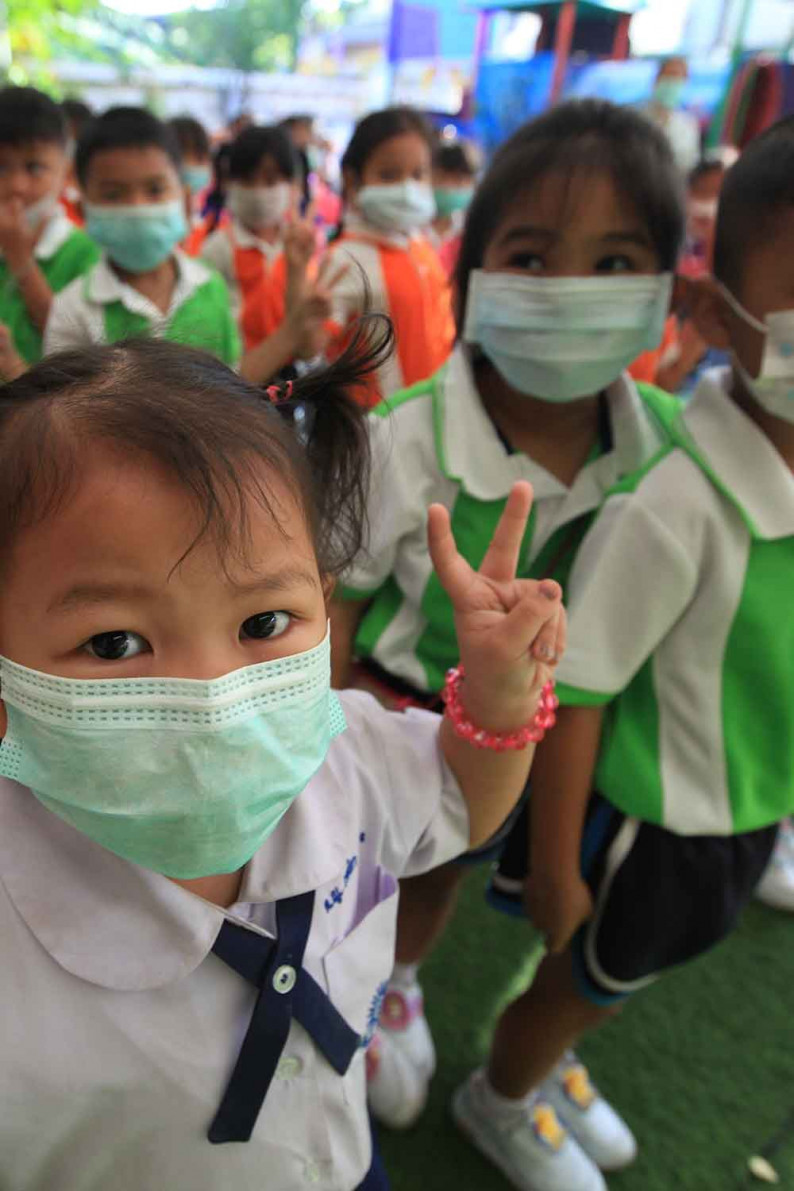There were no celebrations during the New Year holidays, at least not like the ones we have had in previous years. The coronavirus has disrupted what used to be a festive season and life in general.
Throughout the world, infections are on the rise. In Thailand we are facing a second outbreak.
The major hotspot in the first outbreak was the Lumpinee boxing stadium run by the army. A quick lockdown of the country supplemented by sensible mitigation measures like mask-wearing requirements helped to quell the outbreak relatively quickly with a small number of deaths.
Complacency coupled with the complicity of officials with human smuggling rings and illegal gambling dens gave rise to the second outbreak, just when life in Thailand was returning to normal.
But as they say, there is now no "normal", only the "new normal". In this second outbreak, the graph of infections rises precipitously, forcing us to live in fear of being infected and having our lives disrupted once again.
Once again, the entire resources of society have been called upon to fight the virus's invasion. Money and human resources that should go towards improving the life of Thai people must be diverted to eradicate this new disease.
Just like during the first outbreak, people in the lower rungs of society must endure hardships and uncertainties as they are stripped of their regular income and livelihoods.
Meanwhile, the government was basking in the international limelight for its effective management of Covid-19 when the second invasion took it by surprise.
This time, overturning the citizens' lives by enforcing a national lockdown would have been popularly unacceptable. And so, the Prayut Chan-o-cha-led government has been fumbling around to come up with various measures to mitigate people's hardships while still keeping the economy afloat.
Similar scenarios have been repeated in much of the world. Thailand, fortunately, is facing a much less severe infection than other countries, especially the US, India, Brazil and many European countries where healthcare systems have been strained to breaking point.
The amazing thing about this globally disruptive event is that the "enemy" has been identified as a submicroscopic particle -- a very, very tiny thing that on the surface shouldn't have been able to express such devastating power way beyond its size.
But it does, and its power is such that scientists the world over are still puzzling over its mechanisms and how to stop it spreading.
What this demonstrates is, when it comes to natural forces, size does not matter. In fact, it seems like, contrary to the human world, the smaller things get, the more powerful they are.
I am totally humbled by this aspect of the natural world. As scientists peer into the microscopic world, they unearth more amazing knowledge (that inevitably leads to numerous wonderful products).
I am concerned, however, that not many people appreciate what little things in nature can do. I'm thinking specifically about the climate. Scientists have been warning us about climate change for several decades now. But because the change is so small, spanning a long stretch of time, people do not appreciate the vast power that it could unleash.
Many people still think: What can an increase of a couple degrees Celsius really do to us? It's silly to believe such a small change can lead to major catastrophes the scientists keep harping on about.
But of course, it can as we have been witnessing the past several years. As it is, change will keep accelerating and unleashing even more forceful devastation in the form of severe weather events, earthquakes, and the emergence of new diseases like Covid-19, to name a few.
The NOAA Climte.gov website reports that "the global average atmospheric carbon dioxide in 2019 was almost 410 parts per million (ppm for short)… Carbon dioxide levels today are higher than at any point in at least the past 800,000 years".
The 2019 measurement "is an increase of 2.5 ± 0.1 ppm from 2018, the same as the increase between 2017 and 2018. In the 1960s, the global growth rate of atmospheric carbon dioxide was roughly 0.6 ± 0.1 ppm per year."
As we can see, the change is very tiny from year to year though it is growing. Yet, its effects can be felt dramatically throughout the world.
Still, a majority of country leaders do not take the matter seriously enough. They continue to argue about who should be blamed more for heating up the world and whether they should take on the responsibility of cutting greenhouse gas emissions. Meanwhile, the level of CO2 in the atmosphere keeps edging up, at an accelerating pace. Before you know it, we could have crossed the point of no return.
Most people should be concerned about the future of the world in which our children and grandchildren will live. But I'm afraid we have little time left before our leaders realise they are bringing destruction to our future world by their inaction.

